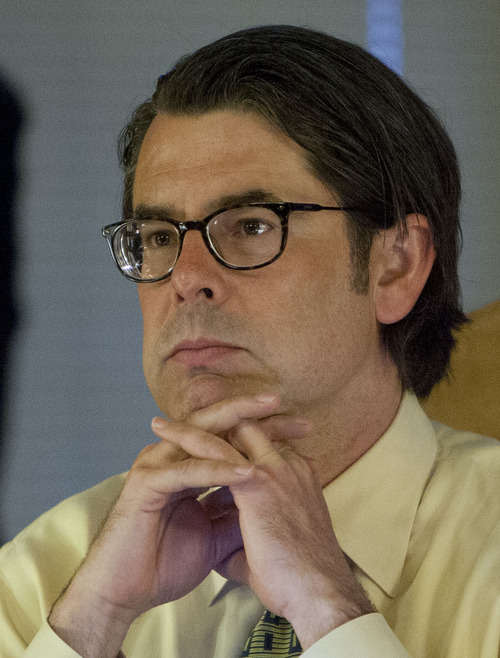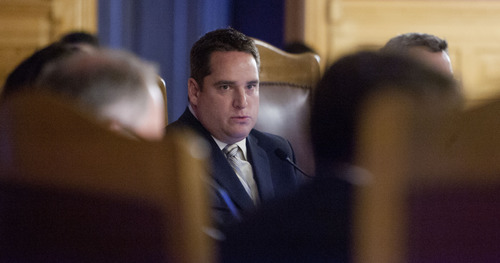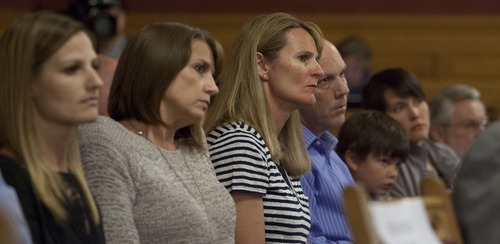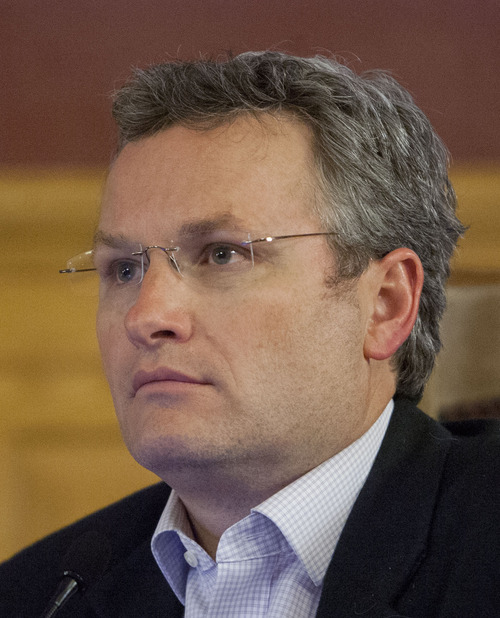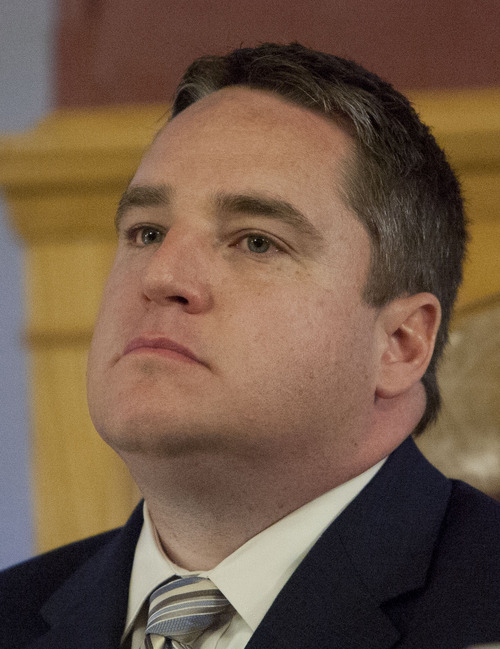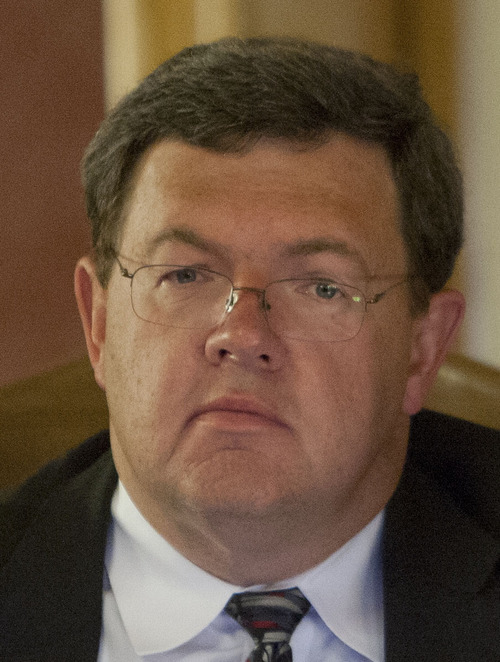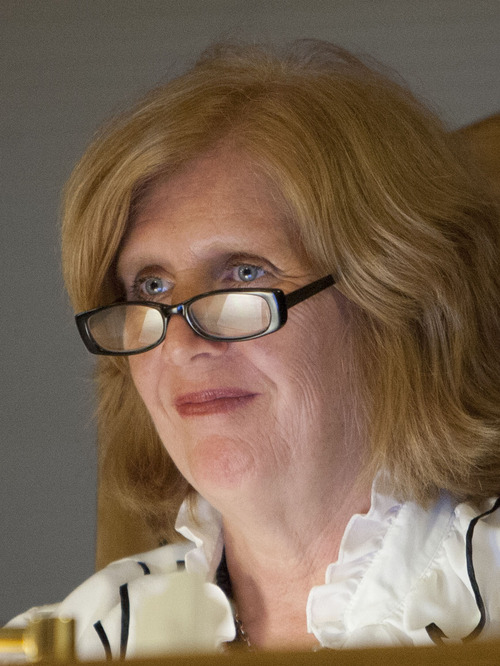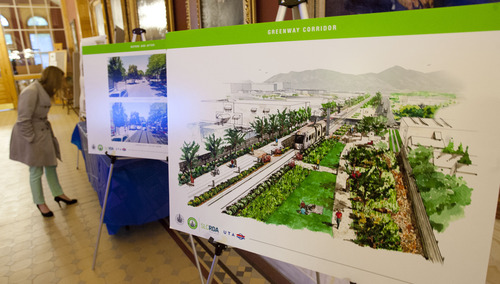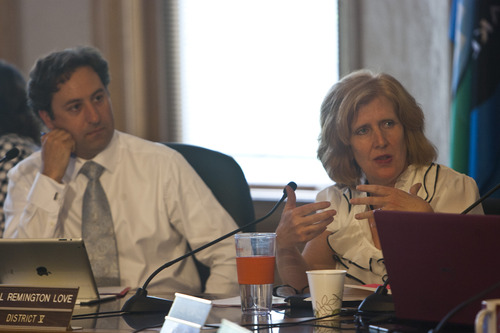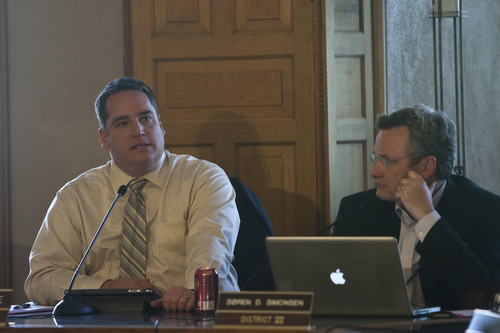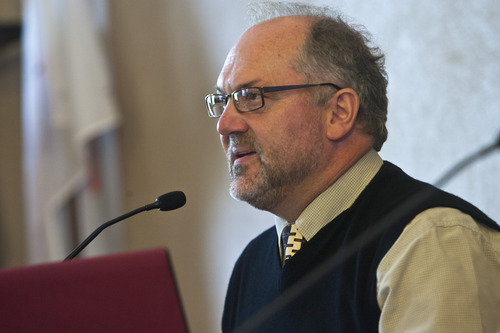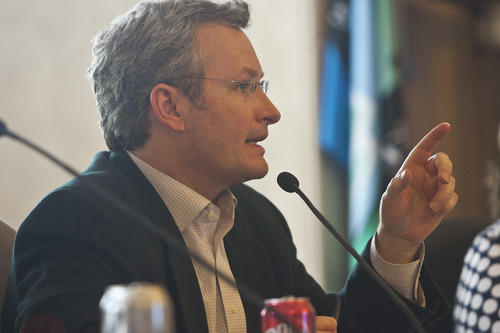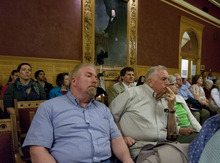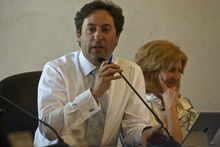This is an archived article that was published on sltrib.com in 2013, and information in the article may be outdated. It is provided only for personal research purposes and may not be reprinted.
In a 4-3 vote Tuesday, the Salt Lake City Council endorsed the controversial 1100 East alignment for Phase II of the Sugar House Streetcar line.
By selecting a "preferred alternative," the city now can seek federal funding for an extension of the line from 2100 S. Highland Drive north along 1100 East to 1700 South. The estimated cost of the extension is about $20 million.
Neither federal nor local funding mechanisms have been identified. And no time frame has been set for construction.
Voting in favor of the 1100 East route were Carlton Christensen, Kyle LaMalfa, Stan Penfold and Jill Remington Love. Soren Simonsen, Charlie Luke and Luke Garrott cast dissenting votes.
A motion by Luke to stop the extension at Highland Drive and wait for a citywide transit study failed.
The issue became contentious after more than 200 residents and business owners packed City Hall last month. At that public hearing, many spoke against the 1100 East route.
Beyond those comments, the council received more than 1,000 emails and phone and text messages on the issue, said LaMalfa, council chairman. That feedback was mixed.
"The public has had their say," LaMalfa said in a Tuesday afternoon work session. "You can rest assured that your voices have been heard."
The 1100 East alignment was favored by Mayor Ralph Becker after a $150,000 study commissioned by the City Council found it would have the highest ridership. The study identified a second, but less optimal, alternative east on 2100 South from Highland Drive to 1700 East.
Phase I of the streetcar line — between the Central Pointe TRAX station at 200 West and 1050 East McClelland Ave. near Fairmont Park — is scheduled to open by year's end.
Simonsen, who represents Sugar House, said the study was flawed and did not properly consider routing the streetcar through the Sugar House Commercial Center on Simpson Avenue.
"I don't agree with some of the assumptions made in this study," Simonsen said. "And I don't think the public agrees with the assumptions."
Luke added that the council doesn't need to follow the consultant's recommendation.
"Just because we spent $150,000 on a study doesn't mean we have to follow it if we don't believe in the results," he said.
Like Garrott, Luke said the city must complete a citywide transit study and increase public outreach before adding to the Sugar House Streetcar line.
"Moving ahead without more fully engaging the public will truly undermine public trust," he said.
Penfold voted for the 1100 East alignment because, he said, it would reduce auto traffic on the sometimes congested street.
"Streetcars are the right transit at the right time," he said. "It gives us an opportunity to improve the quality of our life."
Although residents and business owners criticized the 1100 East alternative as one that would harm the neighborhood, Remington Love said it would improve the area.
"That's why I support the 11th East alternative, because it is compatible with the neighborhood."
Remington Love introduced the successful motion for the 1100 East alignment with the caveat that a community impact study be performed to mitigate traffic and protect historic trees, among other things. It also would create a committee of residents and business owners who would help determine a schedule for construction.
Christensen said he favored Love's motion because Sugar House is in the process of adding new housing stock of apartments and condominiums and will need mass transit.
"New housing will bring a lot more auto traffic to Sugar House," he said. "Businesses along 1100 East will suffer long-term without a transit alternative."
But Garrott criticized the Becker administration for pushing the 1100 East route.
"We know this is a bureaucratic decision, not a democratic one," he said. "People want to help make decisions [that impact their community]. But we're forcing a decision on them."
LaMalfa agreed that the process surrounding the streetcar decision may not have been perfect. But after talking to dozens of Sugar House residents, he was convinced the city must move forward.
"We need to get people out of their cars, both on 1100 East and 2100 South," he said. "We need to accommodate the increasing number of people who live in Salt Lake City and Sugar House. … This is a vote for clean air."


